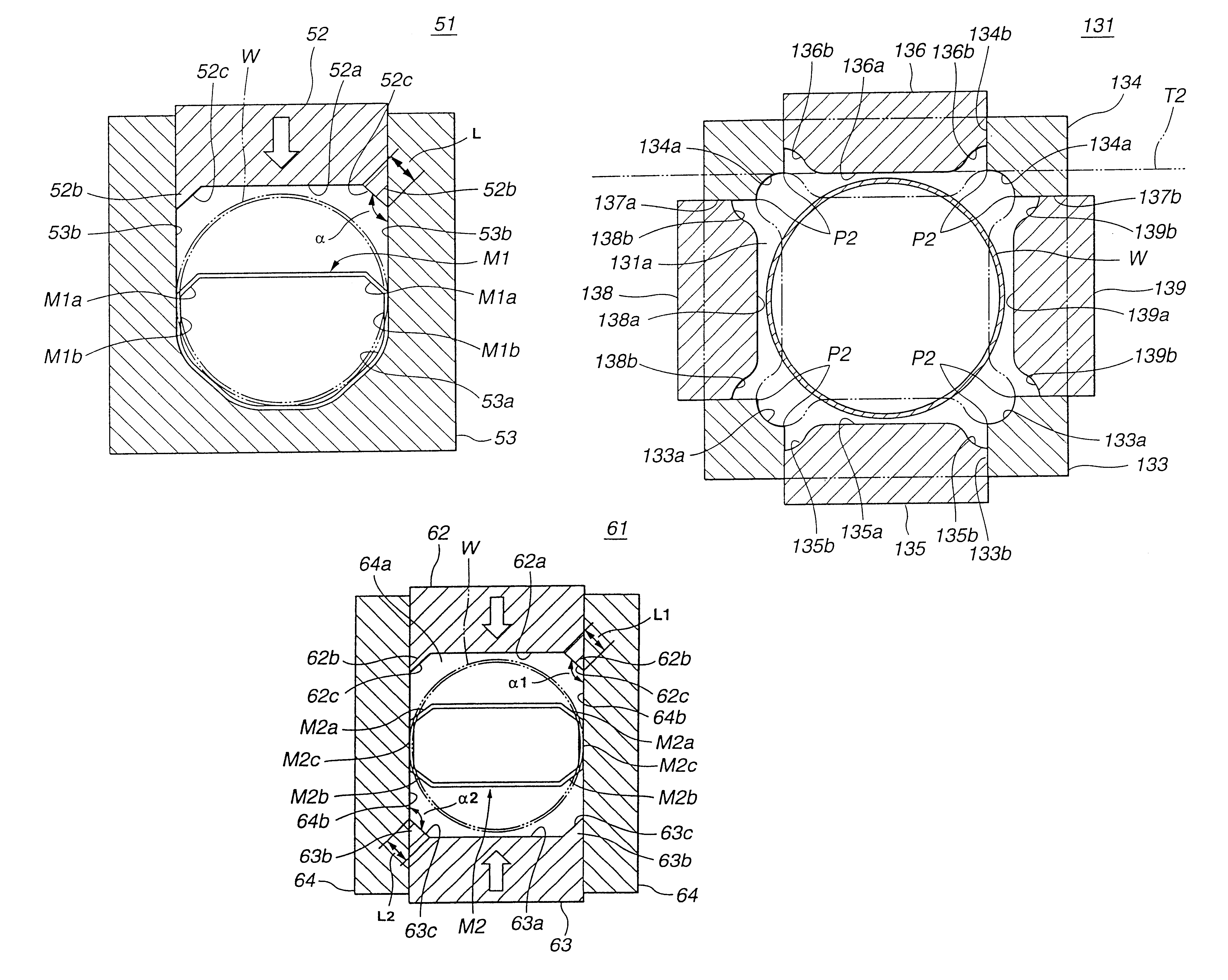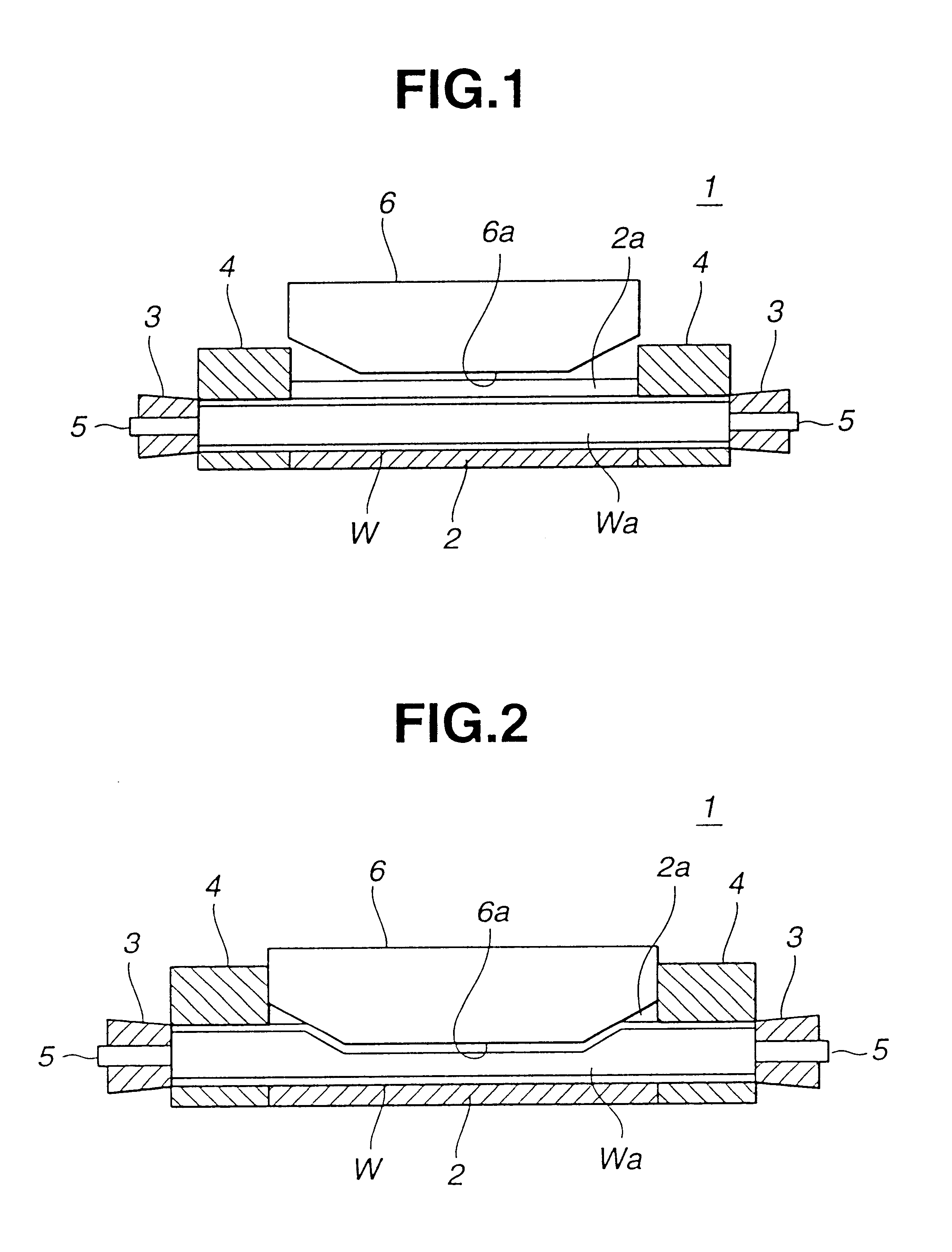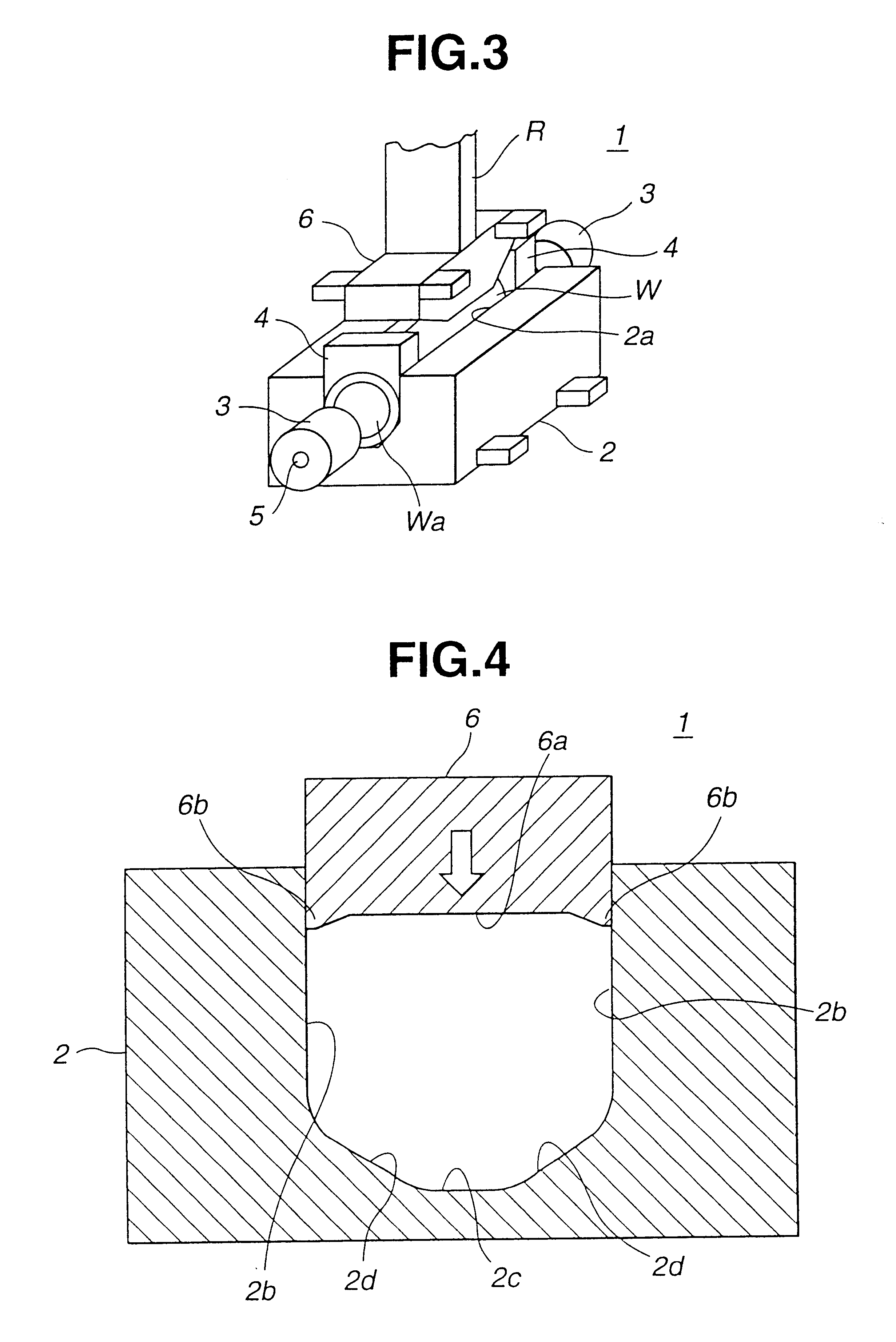Method and device for forming tubular work into shaped hollow product by using tubular hydroforming
a technology of tubular work and hydroforming, which is applied in the field of tubular hydroforming, can solve the problems of difficult to provide a hydroformed hollow product that gives users satisfaction, cracks tend to appear at the portion that has been subjected to wall thinning, and corner portions remote from the center of the work are particularly attacked
- Summary
- Abstract
- Description
- Claims
- Application Information
AI Technical Summary
Benefits of technology
Problems solved by technology
Method used
Image
Examples
first embodiment
Referring to FIGS. 1 to 8, particularly FIGS. 1 to 4, there is shown a hydroforming device 1 with which a method of the present invention is practically carried out.
As will become apparent as the description proceeds, the explanation will be made with respect to a process for producing an automotive side roof rail S (see FIG. 37) as an example of the final component or a shaped hollow product.
As is seen from FIGS. 1 to 4, the hydroforming device 1 comprises generally a female die 2 which has a cavity 2a formed therein, two sealing tools 3 which seal both open ends of a tubular work W, two supporting members 4 which stably support both end portions of the tubular work W while having a major portion of the tubular work W put in the cavity 2a of the female die 2, two feeding tubes 5 which feed and draw a hydraulic fluid into and from an interior Wa of the tubular work W whose ends are sealed by the sealing tools 3 and a male die 6 which presses the tubular work W in the cavity 2a of th...
second embodiment
Referring to FIG. 9, there is schematically shown a female die 22 employed in a hydroforming device 21 with which a method of the present invention is carried out.
As is seen from the drawing, the female die 22 is formed with an axially extending stepped portion 22g between each vertical wall 22b and the adjacent slanted wall 22d. Preferably, the size of the stepped portion 22g is smaller than the thickness of the tubular work W and greater than one tenth (viz., 1 / 10) of the thickness of the work W. Denoted by numeral 22a is a cavity defined by the female die 22. Several tests have revealed that the presence of such stepped portions 22g lessens the possibility of producing undesired buckling of the tubular work W during the forming process. Furthermore, the tests have revealed that the presence of the stepped portions 22g assuredly reduces the stroke length of the male die.
third embodiment
Referring to FIGS. 10 and 11, particularly FIG. 10, there is shown but partially and in a sectional manner a female die 32 employed in a hydroforming device 31 with which a method of the present invention is carried out.
As is seen from FIG. 10, in this female die 32, there is formed, between each vertical wall 32b and the corresponding slanted wall 32d, with an extra slanted wall 32g that defines an angle ".theta." relative to the vertical wall 32b. Preferably, the angle ".theta." is within a range from 0 to 45.degree.. Denoted by numeral 32a is a cavity defined by the female die 32. Tests have revealed that due to presence of such extra slanted walls 32g, the friction inevitably produced between the wall of the female die 32 and the male die 6 can be reduced and the pressing load applied by the male die 6 is evenly transmitted to the entire construction of the work W.
For finding a desired value of the angle ".theta." in case wherein the hydroforming process reduces the circumferent...
PUM
| Property | Measurement | Unit |
|---|---|---|
| Fraction | aaaaa | aaaaa |
| Angle | aaaaa | aaaaa |
| Angle | aaaaa | aaaaa |
Abstract
Description
Claims
Application Information
 Login to View More
Login to View More - R&D
- Intellectual Property
- Life Sciences
- Materials
- Tech Scout
- Unparalleled Data Quality
- Higher Quality Content
- 60% Fewer Hallucinations
Browse by: Latest US Patents, China's latest patents, Technical Efficacy Thesaurus, Application Domain, Technology Topic, Popular Technical Reports.
© 2025 PatSnap. All rights reserved.Legal|Privacy policy|Modern Slavery Act Transparency Statement|Sitemap|About US| Contact US: help@patsnap.com



